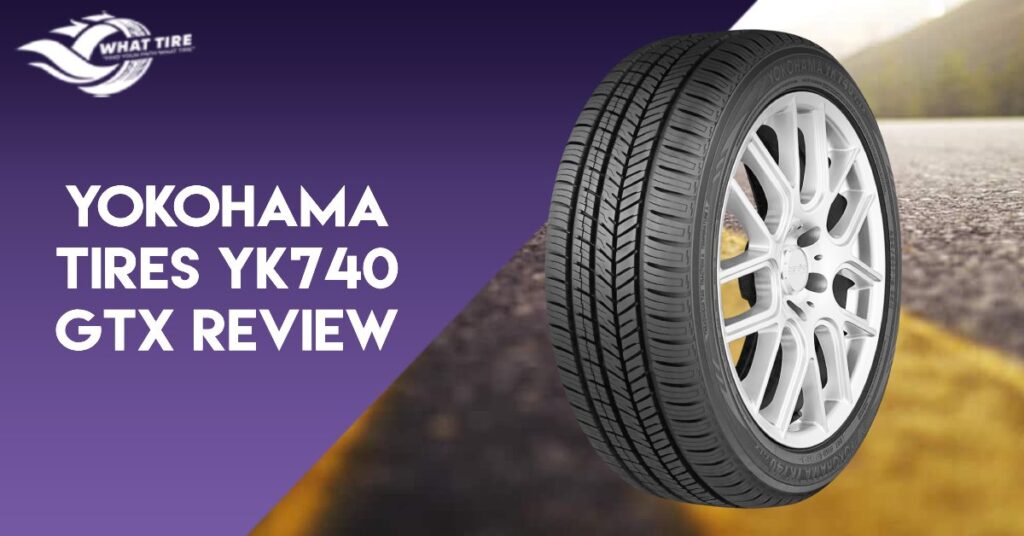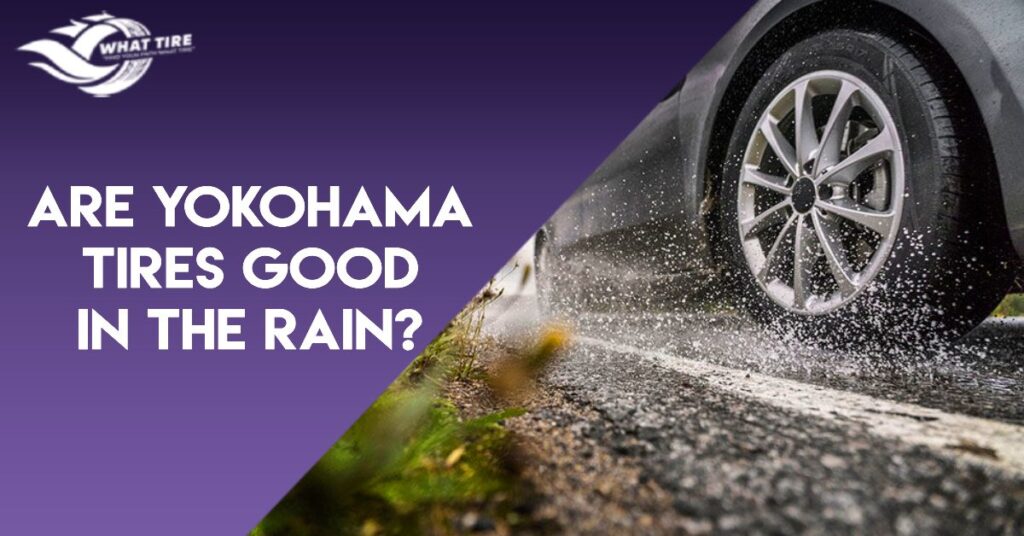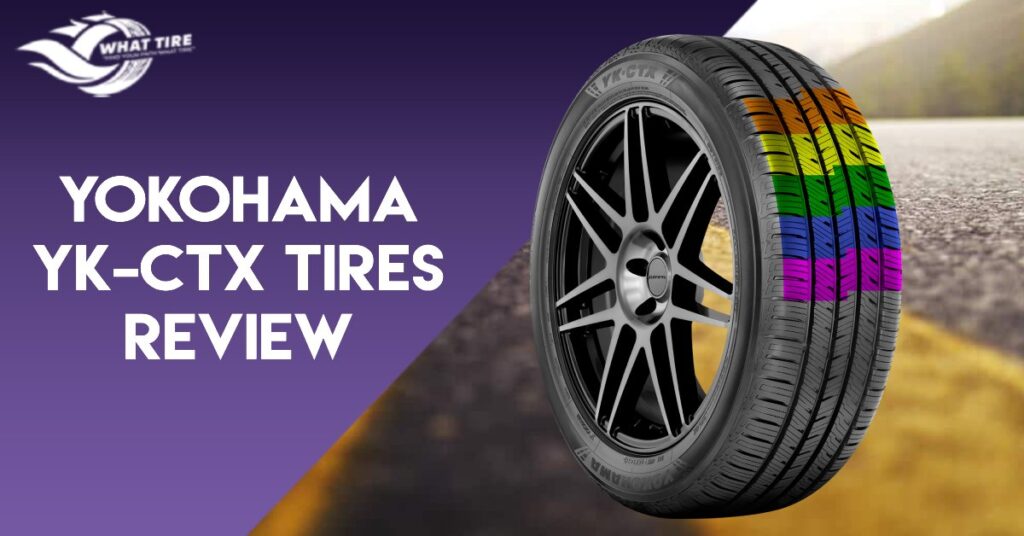Yokohama Tires YK740 GTX Review
In the world of automotive performance, choosing the right tires can make all the difference. Today, we’re giving our review on the Yokohama YK740 GTX tires. As experts who have extensively tested these tires ourselves, we understand the importance of providing an impartial and comprehensive review. From their innovative design features to real-world performance, we’ll delve into every aspect to give you an honest assessment. Whether you’re an expert driver or just hitting the road, our aim is to equip you with the knowledge you need to make an informed decision. Let’s hit the pavement and explore what these tires have to offer. About Yokohama Tires YK740 GTX The Yokohama YK740 GTX stands as a testament to innovation and performance in tire engineering. Crafted with precision, these tires are engineered to excel in a wide range of driving conditions, from dry highways to snow-covered roads. Available in various sizes, ranging from 15 to 18 inches in diameter, and with aspect ratios from 55 to 70, the YK740 GTX caters to diverse vehicle types, including sedans, coupes, minivans, and crossover SUVs. Its tread pattern, featuring an asymmetric design, is optimized to provide exceptional traction and stability. 3 Key Features Of Yokohama Tires YK740 GTX Check out the cutting-edge features that set the Yokohama YK740 GTX apart on the road. 1. Triple 3D Sipes The innovative Triple 3D Sipes technology enhances traction on wet and icy roads, providing drivers with confidence and control in adverse weather conditions. 2. ELS Proprietary Compound At the heart of the Yokohama YK740 GTX lies the ELS (End-Locked Silica) Proprietary Compound, a cutting-edge technology that ensures exceptional traction year-round. Coupled with an ultra-square contact patch, it enhances tread life and wear uniformity, ensuring reliable traction in various weather conditions 3. Nylon Cover The Nylon Cover reinforces the internal structure of the Yokohama YK740 GTX, enhancing its strength and durability. With the Nylon Cover, drivers can enjoy peace of mind knowing their tires are equipped to handle the demands of the road. Yokohama Tires YK740 GTX Performance Review From dry roads to snow-covered highways, the Yokohama YK740 GTX showcases unparalleled performance across diverse driving conditions. 1. Dry Performance The YK740 GTX delivers confidence-inspiring dry performance, thanks to its advanced tread design and optimized rubber compound. Enhanced traction and stability ensure precise handling and cornering, making it a reliable choice for spirited driving. 2. Wet Performance Well! The performance of almost all Yokohama Tires in the rain is good but the YK740 GTX shines with its exceptional wet performance. When the rain starts pouring, the four wide circumferential grooves efficiently evacuate water from the tire’s footprint, reducing the risk of hydroplaning and enhancing grip on wet roads. Drivers can navigate through wet conditions with ease, experiencing heightened confidence and control. 3. Snow Performance While not a dedicated winter tire, the YK740 GTX holds its ground in mild winter conditions. The zigzag sipes and lateral grooves provide additional biting edges, improving traction on snow and ice. Drivers can tackle light snowfall and slushy roads with confidence, ensuring a safe and stable driving experience. Handling and Stability The YK740 GTX excels in delivering precise handling and stability, whether cruising on the highway or navigating through winding roads. Its reinforced construction and optimized tread pattern contribute to a responsive and controlled driving experience, instilling confidence in drivers under various driving conditions. Braking Performance Braking performance is paramount for safety, and the YK740 GTX doesn’t disappoint. Its advanced tread compound and design enhance braking efficiency, allowing for shorter stopping distances on both dry and wet surfaces. Drivers can trust the YK740 GTX to deliver reliable braking performance when it matters most. Noise and Comfort With a focus on comfort, the YK740 GTX offers a quiet and smooth ride, minimizing road noise and vibrations. Yokohama’s engineering expertise ensures that drivers experience a comfortable driving environment, even during long journeys. Enjoy the road ahead with reduced noise and enhanced comfort, courtesy of the YK740 GTX. Yokohama Tires YK740 GTX Tires User Experience Review Check out the firsthand experiences of drivers with the Yokohama YK740 GTX, covering comfort, installation, initial impressions, and long-term satisfaction. 1. Comfort and Ride Quality Drivers praise the YK740 GTX for its exceptional comfort and smooth ride quality, even on rough roads. The tire’s advanced construction and optimized tread pattern minimize road noise and vibrations, ensuring a pleasant driving experience for occupants. 2. Ease of Installation Installation of the YK740 GTX is straightforward and hassle-free, according to user feedback. Its design facilitates easy mounting on rims, allowing for quick and efficient tire replacement or installation by both professionals and DIY enthusiasts. 3. Initial Impressions Initial impressions of the Yokohama YK740 GTX are overwhelmingly positive, with drivers noting improved traction and handling compared to their previous tires. The tire’s performance in various driving conditions, coupled with its sleek design, leaves a lasting impression from the moment it hits the road. 4. Long-Term Satisfaction Over the long term, drivers report high levels of satisfaction with the Yokohama YK740 GTX. Its durability and performance hold up well over extended mileage, providing peace of mind and confidence to drivers. Also Read How Long Are Yokohama Tires Good For? Durability Assessment Have a look at the durability of the Yokohama YK740 GTX through its tread wear, longevity, performance over time, and warranty coverage. 1. Tread Wear Users commend the YK740 GTX for its impressive tread wear resistance, even after extensive use. The advanced rubber compound and reinforced construction contribute to minimal tread wear, ensuring prolonged performance and value for drivers. 2. Tread Life Expectancy With its robust construction and innovative design features, the YK740 GTX boasts an impressive tread life expectancy. Drivers can expect extended mileage before needing to replace their tires, translating to cost savings and peace of mind over the long term. 3. Performance over Time Over time, the Yokohama YK740 GTX maintains its performance and reliability, continuing to deliver consistent traction and handling characteristics. Users report minimal degradation in performance, even after years
Yokohama Tires YK740 GTX Review Read More »



